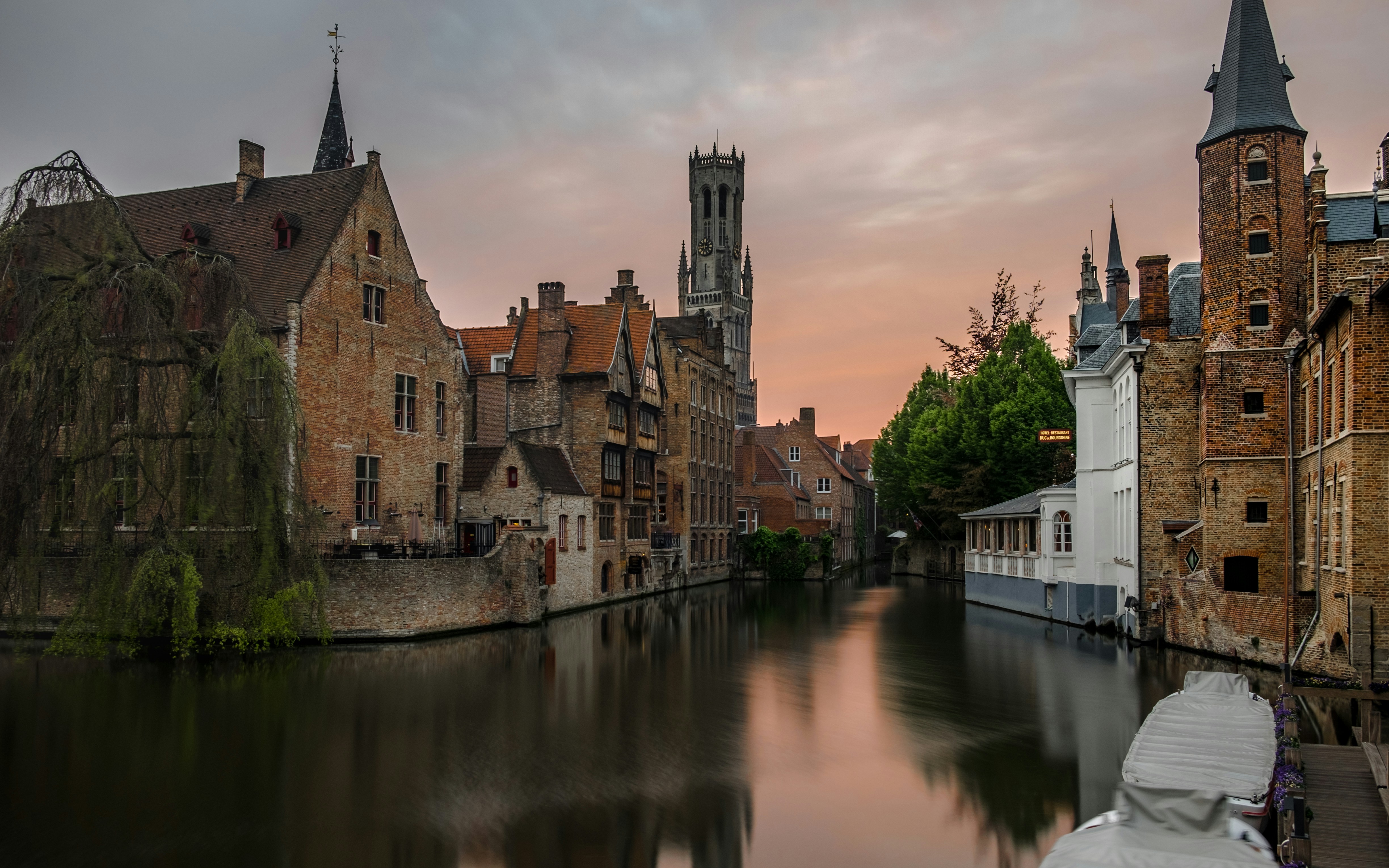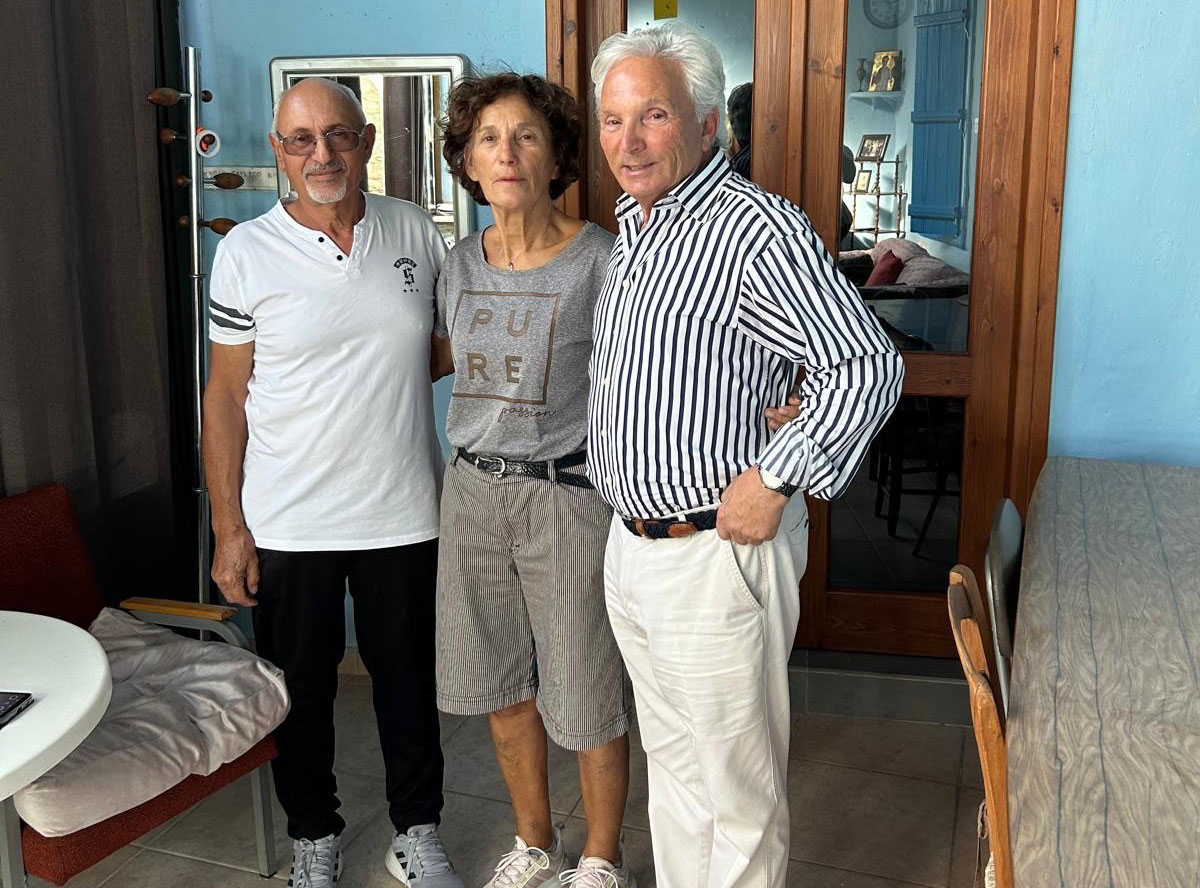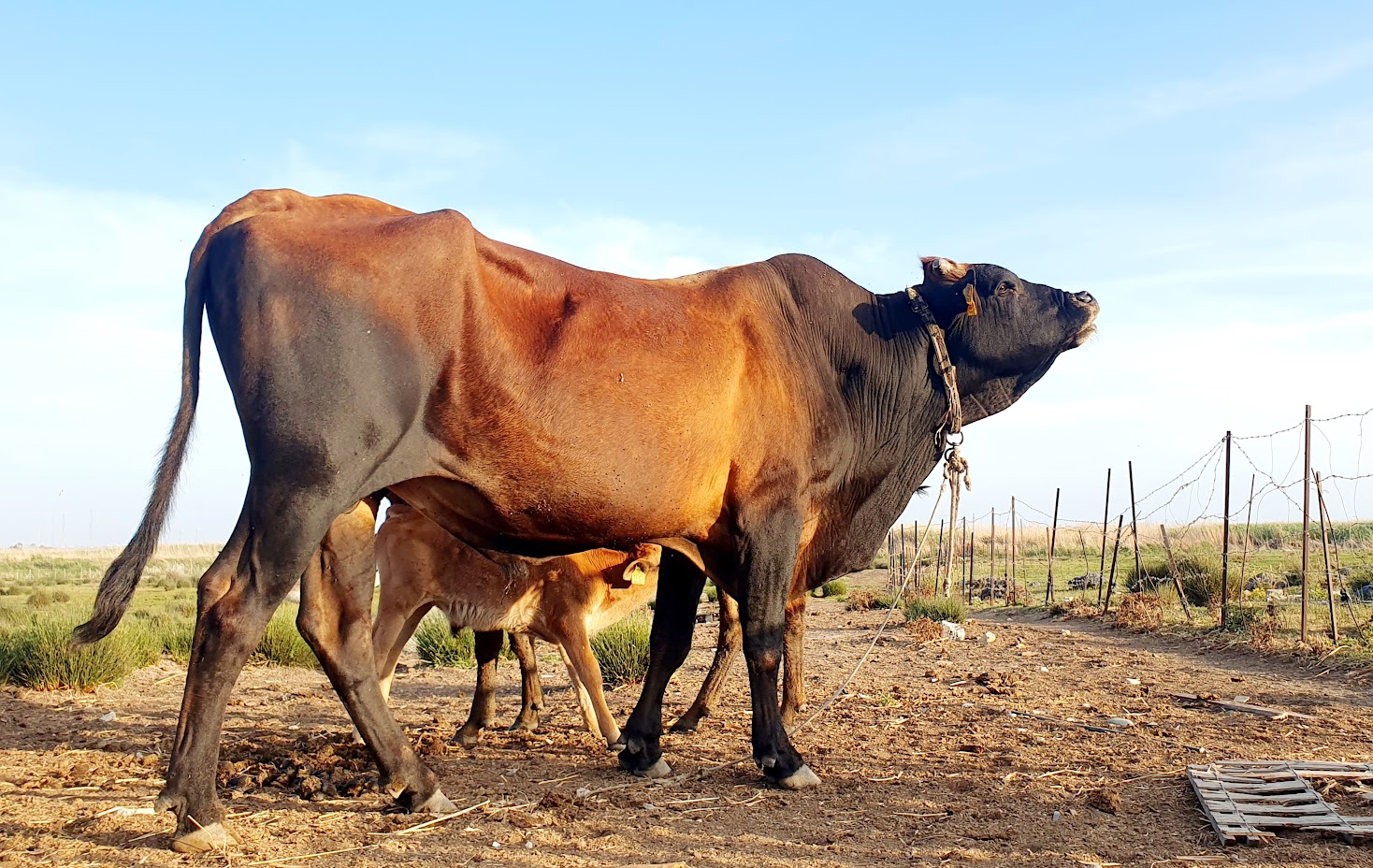Stone houses line narrow streets that twist with the curve of the river Ourthe, and every surface — wall, roof, and bridge — seems touched by moss. The air carries the smell of wood smoke and water.
Durbuy calls itself the smallest city in the world, but size feels irrelevant here. The town is shaped not by growth, but by stillness. It has no need to expand; it is already complete.
The Shape of the River
The Ourthe moves quietly through the valley, looping around the foot of a limestone hill. From above, the curve looks deliberate, like a painter’s brushstroke left unfinished. The river’s sound defines the rhythm of the town — steady, low, continuous.
At dawn, mist rises from the water and drifts between the houses, softening the outlines of the roofs. Fishermen stand in the shallows, their reflections breaking gently on the surface. By midday, the light sharpens and the stones of the old bridge glow pale gray against the green of the banks.
The river has always decided where things belong. The streets follow its turn; the houses lean toward it as if drawn by gravity.
A Town of Stone and Shadow
Durbuy’s beauty lies in its materials. Every wall is built from local limestone, its color shifting with the light — silver in the morning, warm brown by evening. The roofs are steep, the windows small, the doors arched. In rain, the whole town darkens and shines, the stone absorbing the weather rather than resisting it.
The streets are narrow and uneven, made for walking rather than movement. You can cross the town in minutes, but it feels larger than it is, each corner offering a new perspective: a courtyard filled with ivy, a passageway leading to the river, a flight of steps climbing toward a hidden garden.
In the afternoon, sunlight pools in small squares, and the scent of bread and coffee drifts from open doors. Even the smallest details — an iron hinge, a worn threshold, a carved lintel — seem touched by patience.
The Hill and the View
Above the village rises a limestone bluff covered with trees. A narrow path climbs through the forest to the top, where the view opens over the valley. From here, Durbuy looks less like a settlement and more like a pattern — gray roofs following the line of the river, framed by fields and distant hills.
The sound of the town disappears almost completely up here. Only the wind in the leaves remains, and the quiet rhythm of the river below. You can see the bend that gives Durbuy its shape — a single curve defining centuries of life.
The view feels not elevated, but balanced. It reminds you that Durbuy’s perfection lies in proportion rather than scale.
Between Villages and Forests
The land around Durbuy is gentle but alive. Fields rise and fall in long waves, bordered by hedges and orchards. Small chapels and stone crosses stand at crossroads where the roads turn into paths. The forest begins suddenly — beech and oak forming deep corridors of shadow where light filters in thin shafts.
Many Belgium bike tours follow this part of the Ardennes, tracing routes along the Ourthe Valley and through the small villages beyond. The roads are narrow and quiet, curving with the land. Cycling here is less about distance than rhythm: the steady turning of the pedals, the sound of birds, the occasional rush of the river beside you.
It’s easy to stop — to rest under a tree, to watch the light change, to listen. The land asks for attention, not effort.
The Craft of Place
In Durbuy, everything seems to belong to its surroundings. The restaurants serve river trout, forest mushrooms, and local honey. The market stalls offer cheese wrapped in leaves, jams made from wild fruit, and small wooden carvings that echo the shapes of the hills.
Even the modern elements — hotels, cafés, terraces — fit quietly into the rhythm of the old streets. The architecture doesn’t imitate the past but listens to it. The balance between stone, air, and water remains intact.
The people here work with the same restraint as the landscape. Conversations are unhurried; gestures are small. There’s a confidence in stillness — an understanding that beauty doesn’t need to announce itself.
Evening Light
When evening comes, the village changes again. The air cools, and the hills darken. The river reflects the last light, a thin silver line winding through the valley. Windows begin to glow softly, one by one, as people return from the fields and the forest.
The bells from the church mark the hour, their sound carried along the water. The bridge becomes a place to stand and watch — the current moving beneath, the houses leaning toward their reflections.
In the distance, smoke drifts from chimneys, and the smell of wood fires mixes with the damp air. The world seems reduced to essentials: water, stone, and light.
The Silence of Continuity
Durbuy has survived not through preservation, but through rhythm. The same elements that shaped it centuries ago — river, rock, and patience — still define it now. Time moves here, but slowly enough to be visible.
Standing on the bridge after sunset, you feel how naturally everything fits: the curve of the river, the weight of the stone, the calm of the air. The town does not seem built but grown, as if the earth itself decided where walls and roofs should go.
Durbuy teaches you that stillness can have structure, that simplicity can last. It is a place that endures not by holding on to the past, but by never rushing to leave it.







Click here to change your cookie preferences